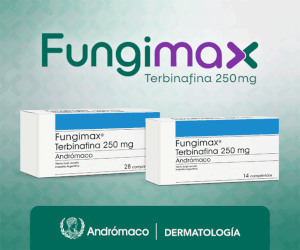Retrospective study of patients with pyoderma gangrenosum in a 20 year period and review of literature
DOI:
https://doi.org/10.47196/da.v18i2.2550Keywords:
pyoderma gangrnosum, neutrophilic dermatosisAbstract
Background: pyoderma gangrenosum is a necrotizing inflammatory disease, of unknown pathogenesis that belongs to the spectrum of neutrophilic dermatosis. There are 4 clinical variants: ulcerative, bullous, pustular and vegetative. It often occurs in association with a systemic disease. Diagnosis is based on clinical findings, histopathology and the exclusion of other entities. Its therapeutic management requires local and systemic treatment.
Objective: to characterize the epidemiologic profile, clinical presentation, number and localization of the lesions and to estimate the prevalence of associated diseases. Also to describe the combination of systemic steroids with other treatments and its clinical response.
Design: observational, descriptive and retrospective study.
Methods: 66 patientes were included with diagnosis of pyoderma gangrenosum between January 1991 and August 2011.
Results: pyoderma gangrenosum prevailed in women (67%), between 50 and 69 years old. The ulcerative variant was the most frequent clinical presentation (77.3%), with multiple lesions (53%) located in the lower limbs. Pathergy was observed in 36% of the cases. 47% of patients had associated diseases being inflammatory bowel disease the most frecuent. Systemic steroids were the first therapeutic choice, and steroid – sparing associated agents were: minocycline, doxycicline, clofazimine and cyclophosphamide. Complete response was acheived in 36 patients.
Conclusion: pyoderma gangrenosum was more frequent in women (67%), between 50 and 69 years old, in most cases with multiple lesions. Pathergy was observed in 36% of the cases and 47% of the patients had associated diseases (Dermatol. Argent., 2012, 18(2): 24-29).
References
I. Powell F.C., Su D., Perry H.O. Pyoderma gangrenosum: Classification and management, J. Am. Acad. Dermatol., 1996, 34: 395-408.
II. Brunsting L.A., Goeckerman W.H., O’Leary T.A. Pyoderma (echthyma) gangrenosum: Clinical and experimental observations in five cases ocurring in adults, Arch. Dermatol., 1930, 22: 655-650.
III. Powell F.C., Schroeter A.L., Su W.P.D., Perry H.O. Pyoderma gangrenosum: a review of 86 patients, Q. J. Med., 1985, 55: 173-186.
IV. P. von den Driesch. Pyoderma gangrenosum: a report of 44 cases folow – up, Br. J. Dermatol., 1997, 137: 1000-1005.
V. Saito N., Yanagi T., Akiyama M., Lin H.Y. et ál. Pyoderma gangrenosum of the eyelid: report of two cases and review of the literatura, Dermatology, 2010, 221: 211-215.
VI. Mansur A.T., Balaban D., Goktay F., Takmaz S. Pyoderma gangrenosum on the breast: a case presentation and review of the publish work, J. Dermatol., 2010, 37: 107-110.
VII. Sheldon D.G., Sawchuk L.L., Kozarek R.A., Thirlby R.C. Twenty cases of peristomal pyoderma gangrenosum. Diagnostic implications and management, Arch Surg., 2000, 135: 564-569.
Downloads
Published
Issue
Section
License
Copyright (c) 2024 on behalf of the authors. Reproduction rights: Argentine Society of Dermatology

This work is licensed under a Creative Commons Attribution-NonCommercial-NoDerivatives 4.0 International License.
El/los autor/es tranfieren todos los derechos de autor del manuscrito arriba mencionado a Dermatología Argentina en el caso de que el trabajo sea publicado. El/los autor/es declaran que el artículo es original, que no infringe ningún derecho de propiedad intelectual u otros derechos de terceros, que no se encuentra bajo consideración de otra revista y que no ha sido previamente publicado.
Le solicitamos haga click aquí para imprimir, firmar y enviar por correo postal la transferencia de los derechos de autor











